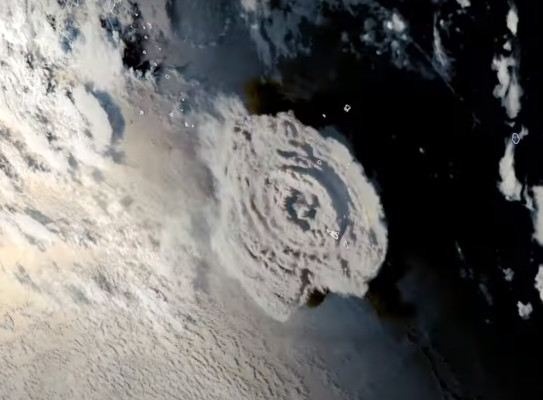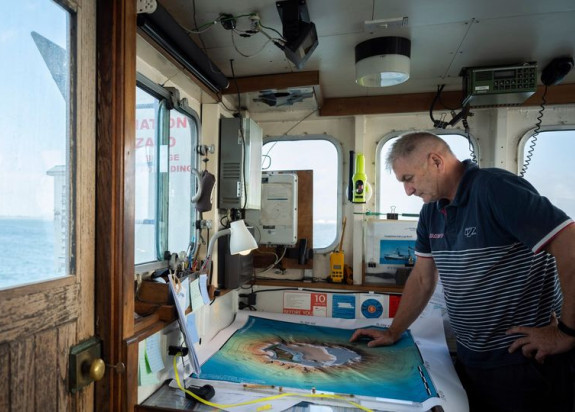Mapping the seafloor after the Hunga Tonga-Hunga Ha’apai eruption

Mapping the seafloor after the Hunga Tonga-Hunga Ha’apai eruption - why we still don’t know what it looks like
A very large eruption occurred in Tonga on 15 January 2022, when the Hunga Tonga-Hunga Ha’apai volcano exploded through the ocean, triggering a tsunami with waves that headed for coastlines right around the Pacific Ocean.
Keen to be first to map the seafloor to understand what happened beneath the water during the eruption, and where future eruptions at the volcano might emanate from, GNS experts Cornel de Ronde and Craig Miller set off on NIWA New Zealand(external link)(external link)’s RV Kaharoa from Port Wellington on 5 April 2022.

Destined for the Hunga Tonga – Hunga Ha’apai volcano in the Kingdom of Tonga, all eyes were on the goal of finding out what changes were caused by the powerful 15 January eruption. The voyage was expected to take 6.5 days transit each way and 6 days on station, for a total of 19 days at sea.
The research was funded by the National Science Foundation (NSF)(external link), through the The University of Texas at Dallas(external link), and supported by Fugro(external link).
Unfortunately for de Ronde and Miller and their many enthusiastic, land-based, science and media followers, the research party were forced to turn back after only four days at sea when a critical piece of equipment, the multibeam transducer, was found to have broken from the vessel.
The multibeam was to be used to produce the bathymetric maps of the caldera and upper flanks of the volcano. The crew believes it may have been knocked from the ship by a submerged log, debris from the 1-in-a-100-year flood event that had plagued the East Cape of New Zealand prior to their departure.
Efforts to replace the multibeam and resume the journey were unsuccessful and the research team were forced to return home.
Sometimes a project doesn’t go the way we expect it to. This is one of those times
“We are all extremely disappointed not to be going ahead with the work we had planned.”
The whole 'not-to-script' experience was captured on video (below)(external link)(external link), a commendable testament to the generous good sportsmanship of the crew.
All thanks to National Science Foundation (NSF), The University of Texas at Dallas, Fugro, and NIWA New Zealand for partnering with us to support our research.
Eventually, following our challenges, the Hunga Tonga-Hunga Ha'apai caldera was mapped and captured in a video that first premiered at GSA Connects 2022. The narrative was written and performed by Dr Bob Stern, and production funded by NSF. Watch the story HERE(external link).